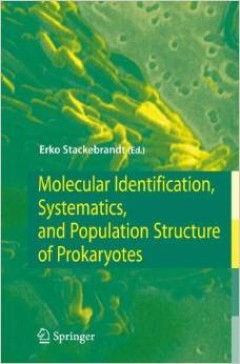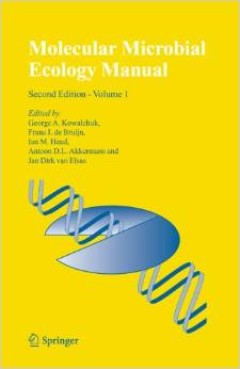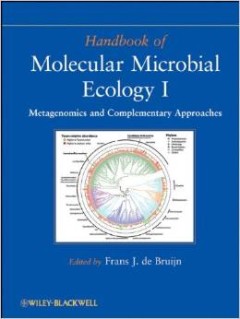Filter by

Molecular identification, systematics, and population structure of prokaryotes
Systematic biology has a far wider application than merely the provision of a reliable classification scheme for new strains. With the framework of the hierarchic system stabilizing, genomes, noncoding regions, and genes and their products can now be evaluated in an evolutionary context. This book summarizes recent developments in the molecular characterization of cultured and as-yet uncultured…
- Edition
- -
- ISBN/ISSN
- 9783540231554
- Collation
- xiv, 320 p. : ill. : ind. ; 25 cm.
- Series Title
- -
- Call Number
- 579.3 Mol

Environmental microbiology
Designed for advanced undergraduate students, graduate students, and environmental professionals, this book builds upon the tremendous success of the previous editions with a comprehensive and up-to-date discussion of environmental microbiology as a discipline that has greatly expanded in scope and interest over the past several decades. From terrestrial and aquatic ecosystems to urban and indo…
- Edition
- 3rd edition
- ISBN/ISSN
- 9780123946263
- Collation
- xxii, 705 p. : ill. : ind. ; 29 cm.
- Series Title
- -
- Call Number
- 576.15 Pep e

Molecular microbial ecology manual volume 1 & 2
Microbes are key drivers of the world's ecosystems. The vast majority of the world's diversity and metabolic potential lies within micro-organisms, yet with the advent of molecular-scale observation, we are still barely beginning to understand this microscopic resource. The expanded second edition provides a detailed description of the methods that have made microbial ecology possible.
- Edition
- -
- ISBN/ISSN
- 9781402021763
- Collation
- xvi, 849 p. : ill. ; 24 cm.
- Series Title
- -
- Call Number
- 576 Mol

Handbook of molecular microbial ecology I : metagenomics and complementary ap…
Metagenomics is an emerging field that has changed the way microbiologists study microorganisms. It involves the genomic analysis of microorganisms by extraction and cloning of DNA from a group of microorganisms, or the direct use of the purified DNA or RNA for sequencing, which allows scientists to bypass the usual protocol of isolating and culturing individual microbial species. This method i…
- Edition
- -
- ISBN/ISSN
- 9780470644799
- Collation
- xxii, 761 p. : ill. : ind. ; 29 cm.
- Series Title
- -
- Call Number
- 576 Han

Environmental microbiology methods and protocols
An up-to-date view of molecular mechanisms for investigating microbial communities and their biological activities, this new volume of Environmental Microbiology: Methods and Protocols looks at recent advances that are having a big impact on the field such as metagenomics and other “omics” technologies, NanoSIMS, as well as stable isotope probing and more. Conveniently divided into four par…
- Edition
- 2nd
- ISBN/ISSN
- 9781627037112
- Collation
- x, 242 pages : ill. : ind. ; 27 cm.
- Series Title
- -
- Call Number
- 576.15 Env
 Computer Science, Information & General Works
Computer Science, Information & General Works  Philosophy & Psychology
Philosophy & Psychology  Religion
Religion  Social Sciences
Social Sciences  Language
Language  Pure Science
Pure Science  Applied Sciences
Applied Sciences  Art & Recreation
Art & Recreation  Literature
Literature  History & Geography
History & Geography